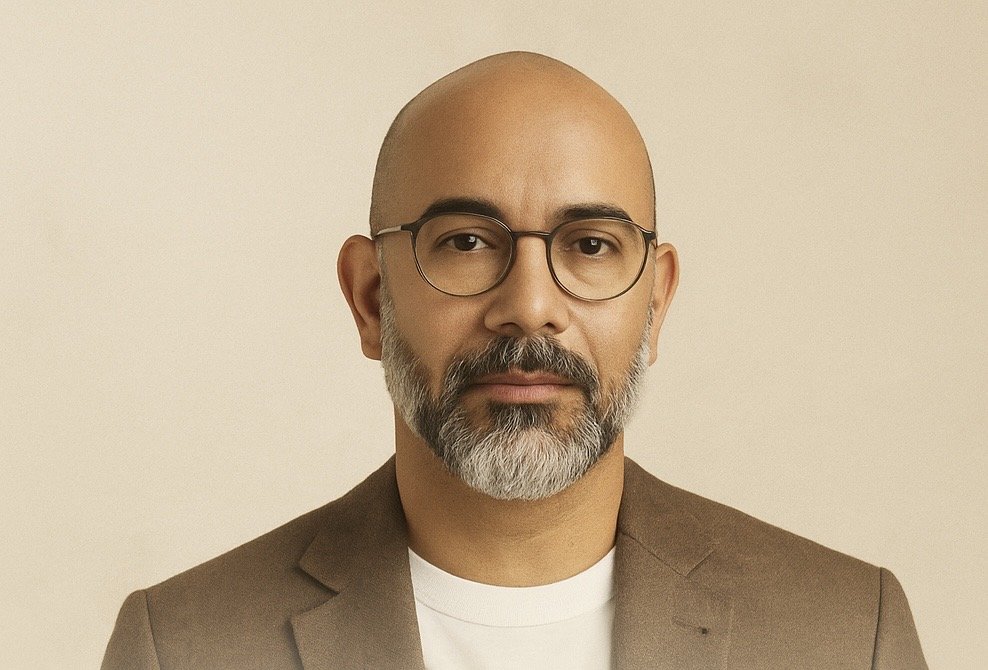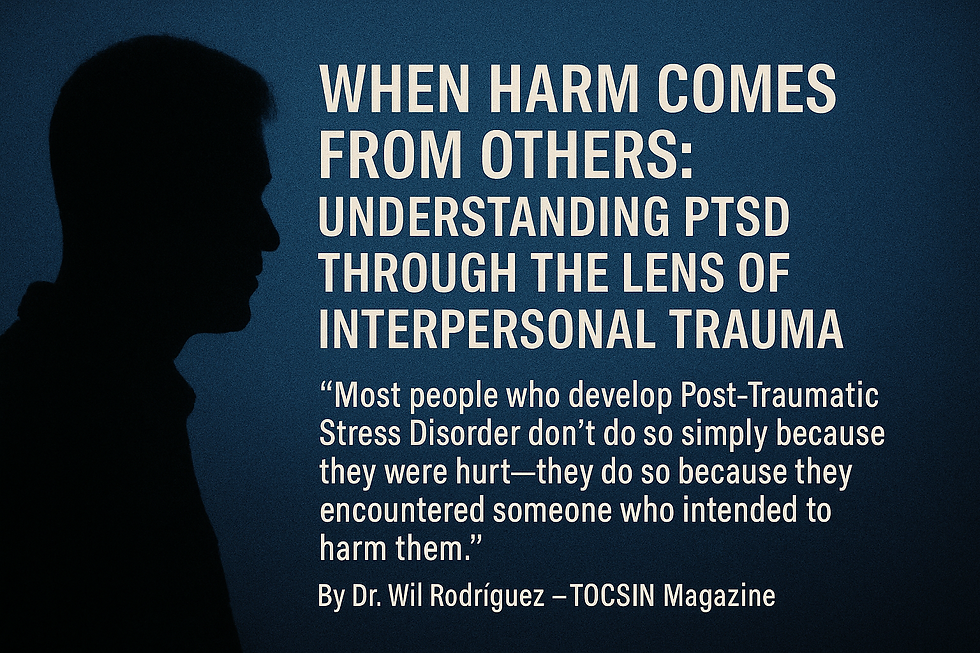When Harm Comes from Others: Understanding PTSD Through the Lens of Interpersonal Trauma
- Dr. Wil Rodriguez

- Aug 7
- 2 min read
By Dr. Wil Rodríguez | TOCSIN Magazine

Introduction: A Deeper Truth
Most people who develop Post-Traumatic Stress Disorder don’t do so simply because they were hurt—they do so because they encountered someone who intended to harm them. This subtle difference shifts our focus: PTSD is not only a reaction to danger; it is often a wound inflicted in the theater of human relationship. This exploration goes beyond trauma as event—it understands trauma as relational betrayal and violation.
PTSD: More Than a Response to Threat
Post-Traumatic Stress Disorder is a mental health condition arising after exposure to events perceived as physically or emotionally threatening—whether through direct experience or witnessing them. Symptoms include intrusive memories, flashbacks, nightmares, anxiety, emotional detachment, and hypervigilance, persisting beyond one month and significantly impairing daily function.
Not everyone who faces trauma develops PTSD, but the type of trauma matters deeply. Interpersonal traumas—those involving intentional harm by another person—carry a far greater risk than impersonal events like accidents or natural disasters. Moderate-quality evidence places PTSD incidence at approximately 25% following interpersonal trauma, compared to around 10% after non‑interpersonal trauma.
The Relational Wound: Why Interpersonal Trauma Hurts More
Research consistently shows that traumas caused by someone else—especially someone close—produce more severe and persistent PTSD symptoms than those from impersonal causes. Studies involving adolescents reveal that multiple interpersonal traumas—such as abuse or betrayal—amplify both PTSD symptoms and interpersonal dysfunction, creating a cycle of emotional and relational challenges.
Moreover, betrayal trauma, occurring when someone we trust harms us, inflicts unique psychological harm. It disrupts our sense of safety in relationships and sometimes triggers dissociation to preserve attachment.
The Compounded Threat of Complex Trauma
When trauma is repetitive or originates early in life, it can evolve into Complex PTSD (C-PTSD)—a condition that carries the core symptoms of PTSD, plus emotional dysregulation, shame, negative self-beliefs, and relational difficulties.
Why Understanding This Changes Everything
Recognizing the Source of Suffering
When PTSD stems from intentional harm, the real injury isn’t just in what happened, but who it came from. Understanding this helps survivors untangle trauma from self.
Framing Treatment for Relational Repair
Healing isn’t just about soothing symptoms—it’s about restoring or reframing trust in relationships, through trauma-informed therapy.
Cultivating Compassion Without Blur
There’s a compassionate understanding for someone who harms—but we don’t confuse empathy with erasing the harm.
Reglexion Box — Healing the Relational Wound
A TOCSIN Moment, curated by Dr. Wil Rodríguez
Your Task Today
Reflect on a moment where your trauma felt personal—really intentional.
Write two columns:
What occurred.
What violated relational or emotional trust.
End with: “My healing begins with naming the real harm.”
Community Action
Share the phrase “Healing begins when we name the real harm.”
Invitation to TOCSIN Magazine
At TOCSIN, we believe healing emerges when insight meets intimacy—when trauma isn’t just observed, but held and transformed. If this touched a chord in you, imagine what our collective inquiry could ignite.
Join the TOCSIN movement.
Read thoughtfully. Reflect courageously. Respond fearlessly. Bring your voice into our growing conversation on relational healing.
📍 Explore more at TOCSIN Magazine: tocsinmag.com







Comments